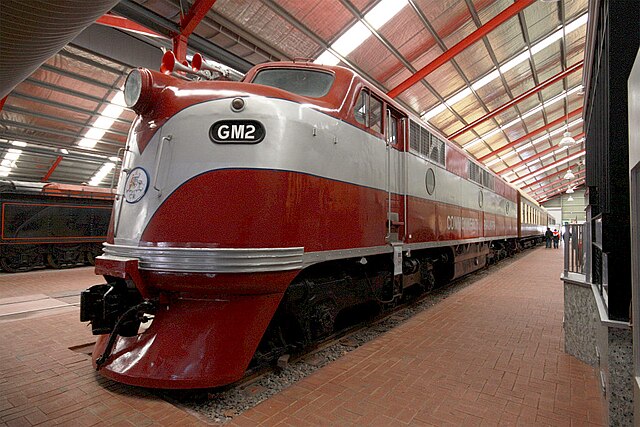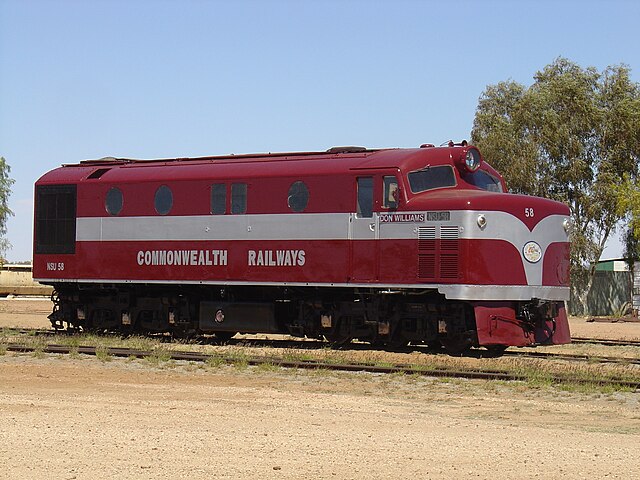The Commonwealth Railways were established in 1917 by the Government of Australia with the Commonwealth Railways Act to administer the Trans-Australia and Port Augusta to Darwin railways. In 1975, all assets were acquired by the Australian National Railways Commission, branded as Australian National Railways and subsequently Australian National, trademarked as AN.
Preserved Commonwealth Railways GM class diesel locomotive at the National Railway Museum, Port Adelaide
Preserved NSU class narrow-gauge diesel-electric locomotive at the Old Ghan Heritage Railway and Museum, Alice Springs, in 2006. As with the NT class, these locomotives operated on both the North Australia Railway and the Central Australia Railway.
Ex-Commonwealth Railways NT class locomotives NT67 and NT76 loading a bulk wheat train at Wirrabara in 1987 on the now-abandoned Gladstone–Wilmington narrow-gauge railway line of the former South Australian Railways. The locomotives are badged as Australian National Railways, the entity that took over the operations of both the Commonwealth Railways and the South Australian Railways in 1975.
Preserved carriage from the narrow-gauge Ghan in Alice Springs in February 2009
The Trans-Australian Railway, opened in 1917, runs from Port Augusta in South Australia to Kalgoorlie in Western Australia, crossing the Nullarbor Plain in the process. As the only rail freight corridor between Western Australia and the eastern states, the line is economically and strategically important. The railway includes the world's longest section of completely straight track.
The single-track Trans-Australian Railway at Cook, once a major station and servicing point
The Trans-Australian proceeding from Port Pirie Junction to Port Augusta and Western Australia in 1938, soon after the Trans-Australian Railway was extended to Port Pirie
In 1986 the Trans-Australian at Rawlinna, WA is bound for Port Pirie. It would be another 18 years before all mainland state capitals were connected by standard gauge tracks.







